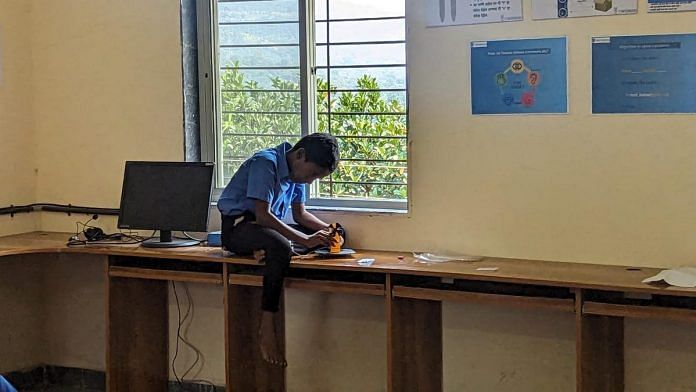Panshet: Akshay Bavdhane, the son of resort workers in Pune’s Velhe taluka, has traded his small village school for a fancy new one, where he’s making cardboard rockets, tinkering with solar-powered fans, and diving into computers and arts. As his school has gotten bigger, so has his dreams. “I want to become a software engineer,” he said.
He is part of a bold education experiment by the Maharashtra government—relocating children from small, distant, and ill-equipped village schools and clubbing them into larger omnibus “cluster schools”.
This year, the first cluster school opened in Pune’s Panshet, and the government is now planning to implement this model statewide. The cluster schools aim to offer improved facilities, access to high-quality teachers, and a more diverse peer group.
But questions linger: Will the ‘reform’ bridge educational gaps, or will it compel some students to drop out because of the distance of the school from their villages?
Do they have the capacity to build such state-of-the-art schools everywhere? Why don’t they improve the existing infrastructure?
-Bhausaheb Gawande, former joint director of education in Maharashtra
Bavdhane, a seventh-grade student, transitioned from a modest school in Mose Budruk village to the first ‘cluster school’ in neighboring Panshet of Velhe taluka this June. This school, operated by the Pune Zilla Parishad and partially funded by the Bajaj Foundation, serves 14 villages within a roughly 20-km radius. His family was convinced after the administration held meetings in his village. The promise of better facilities, a bus service, and the assurance of improved education sealed the deal for them.
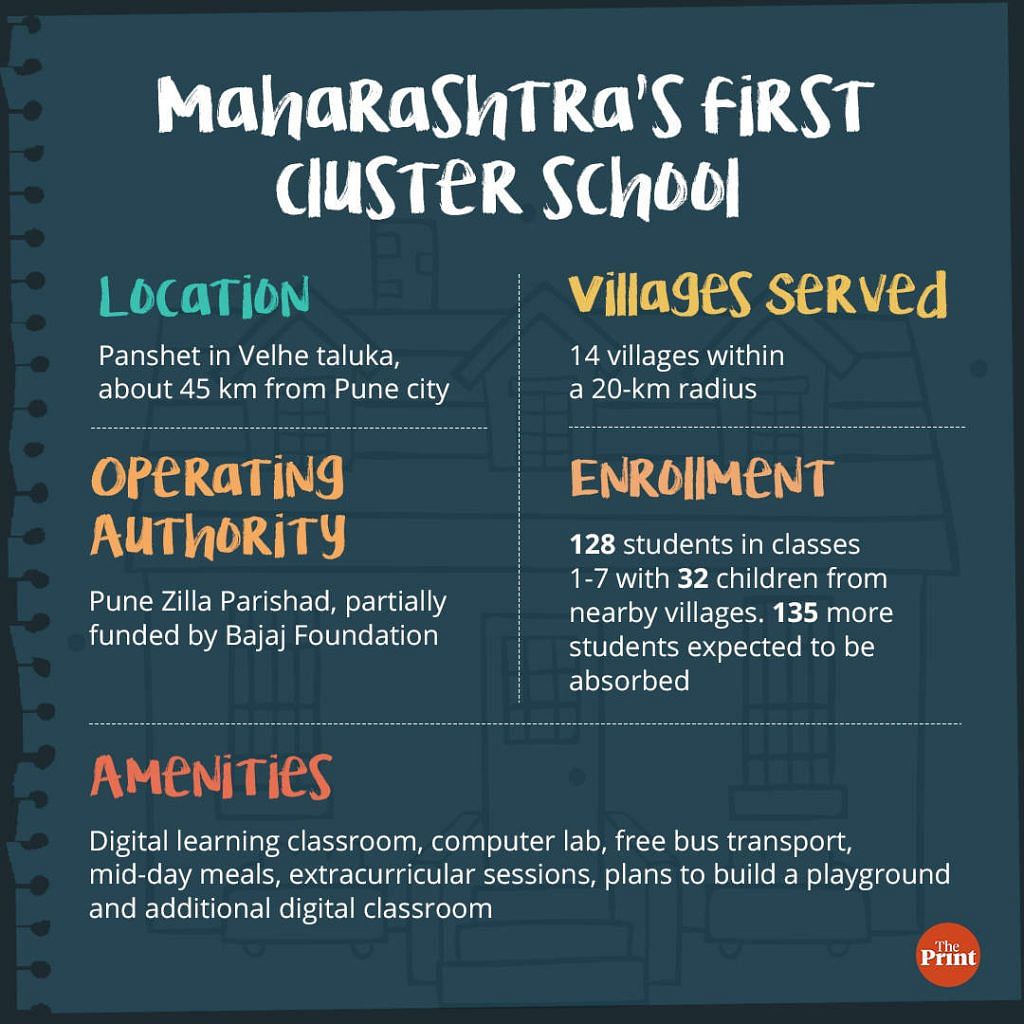
On 21 September, the Maharashtra government issued a circular stating that schools with fewer than 20 students in a certain area will be combined into one big cluster school. Government officials said that each cluster school will serve students within a 40-minute bus ride. Village schools that are absorbed into cluster schools will eventually be shut down.
This change will impact around 10,500 schools and 1.85 lakh students. The education department is studying the feasibility of clustering these schools and is expected to come out with a study in November.
Clustering brings efficiency, cost-cutting, and aspirations.
“The purpose of this scheme is to bring students studying in small schools to their nearest cluster school at the expense of the government. Students will have access to more resources, more friends, and expert teachers in different subjects. They will be able to participate in arts and sports competitions,” said Suraj Mandhare, Maharashtra education commissioner.
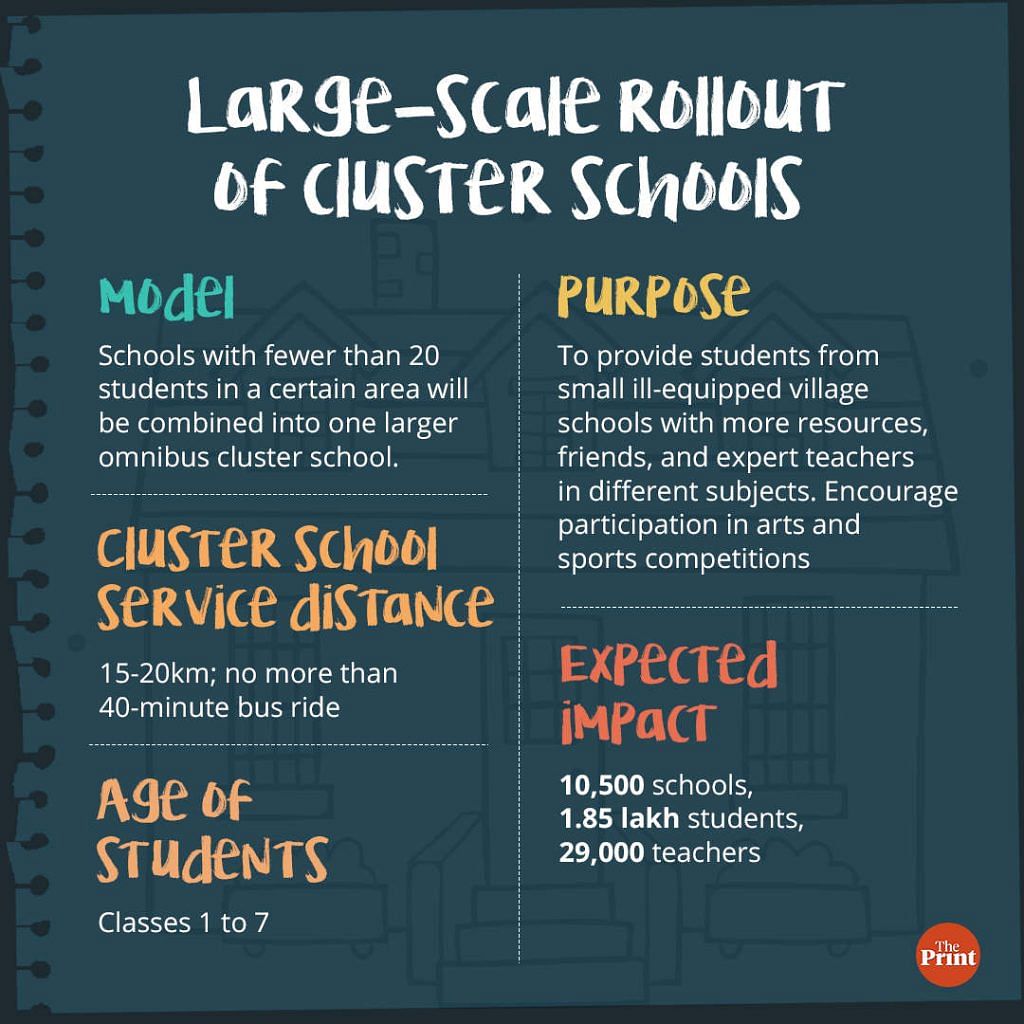
But not everyone is sold on the concept. The Congress has labelled it a manoeuvre to close down remote government schools to save money. Teachers are protesting that fewer students do not equate to subpar education. And many parents, especially of daughters, are worried about longer commutes.
Critics have also contended that the scheme runs counter to the Right to Education (RTE) Act, which stipulates access to primary schools within a 1 km radius. Some want the government to improve the existing infrastructure rather than set up new schools.
“I want to ask them — do they have the capacity to build such state-of-the-art schools everywhere?” said Bhausaheb Gawande, former joint director of education in Maharashtra. “To find the answer, just look at the existing schools around. Why don’t they improve the existing infrastructure?”
Also Read: Hindi engineering courses in MP are just not taking off. Students keep moving to English
All roads lead to Panshet
The freshly remodelled cluster school in Panshet looks almost like a psychedelic vision amid the hills and thick vegetation of Velhe taluka, about 45 km from Pune city.
Bright murals of Chhota Bheem, animals, patterns, and letters adorn every inch of the external walls. “My Colourful School,” says one of the signs painted on the school wall.
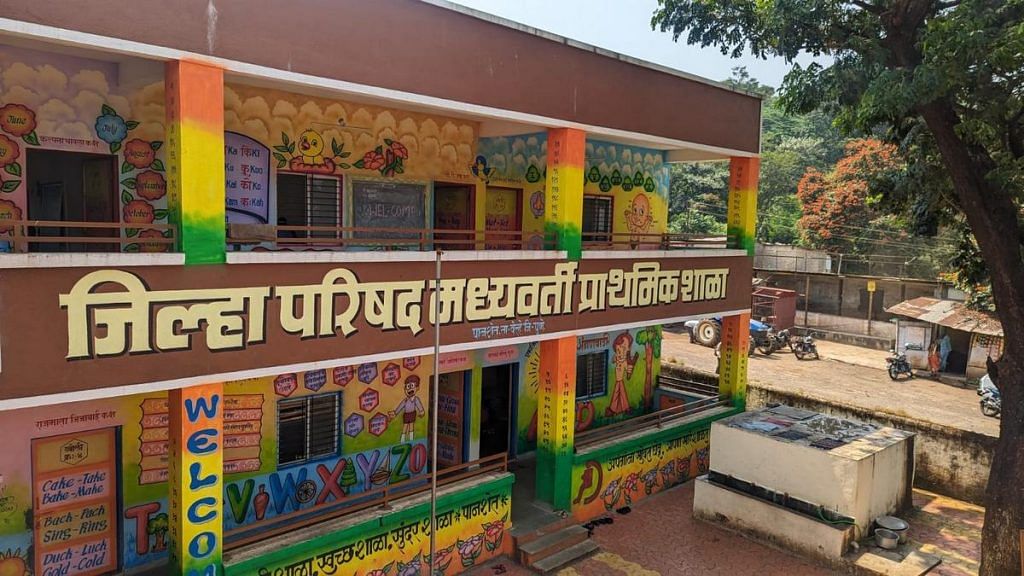
Inside, the building is clean and well-maintained. There’s a computer lab for older students and one classroom is exclusively reserved for digital learning, with a large plasma screen and projector. The school provides free bus transport and midday meals, and plans are afoot to build a playground and another digital classroom.
Every Friday, a teacher from the ThinkSharp Foundation, an NGO, engages students in extracurricular activities, including science projects such as building mechanical instruments.
A school is not just a curriculum and a combination of teachers and students. It’s a huge canvas of competitions, sports, educational trips, friendships, new experiences.
-Suraj Mandhare, Maharashtra education commissioner
State education commissioner Mandhare said that the school receives some funding from the Bajaj Foundation. “I see no harm in involving corporates,” he said. “They spend a significant amount on student education, which is always welcome.”
Principal Shabhana Khan said that 128 children are currently enrolled in the Panshet, 32 of whom are from neighbouring villages.
The school is also “in the process” of absorbing 135 of 175 students from nearby villages, according to Mandhare, and the “response is very good”.
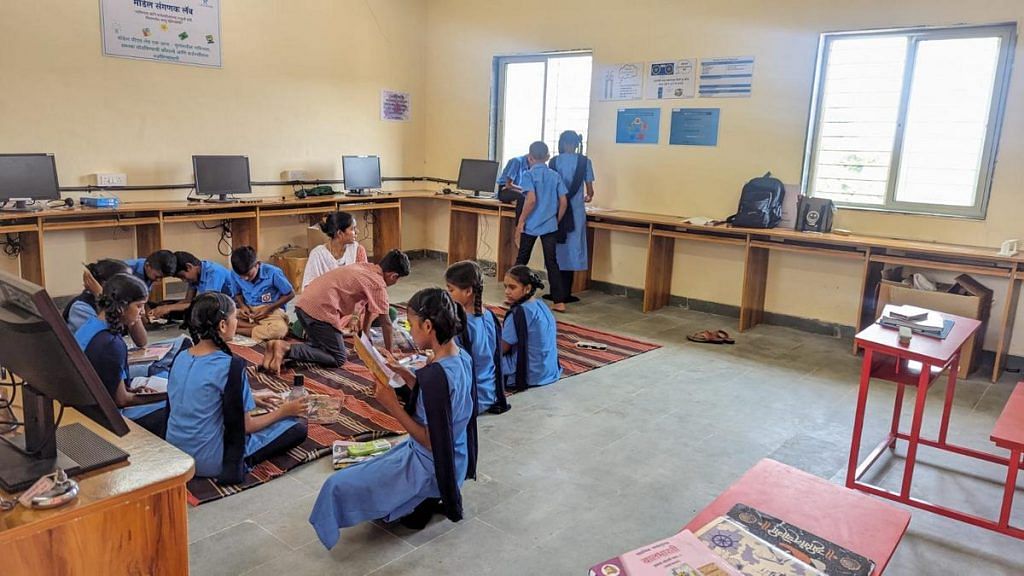
Initially, Mandhare said, 21 villages were identified to be merged into Panshet school, but the number was later reduced to 14. The remaining seven villages were excluded due to their remote locations and are still operational.
The fate of the students who will not attend Panshet from among the 14 village schools is uncertain, because these schools are expected to close.
The cluster school only serves children in classes 1 through 7. After that, students attend higher classes at various other schools, as there is no clustering reform at this level.
The Right to Education Act of 2009 specifies that a primary school should be located within 1 km of a village, a middle school within 3 km, and a high school within 5 km. In contrast, a cluster school can be as far as 15-20 km from a village.
Social engineering?
The Panshet school is not just about better infrastructure. It’s also a social engineering exercise of sorts, breaking down the caste and class divisions that still thrive in some village schools.
“In this cluster school, students from different classes and environments can intermingle, which will be good for them,” principal Khan said. “We will be giving them a good education along with developing their personalities and making them more confident.”
For Chabbita Waghmare, an Adivasi labourer, the school represents the end of generations of discrimination. Her grandchildren travel from Mose Budruk village, about 15 km away, to attend the school.
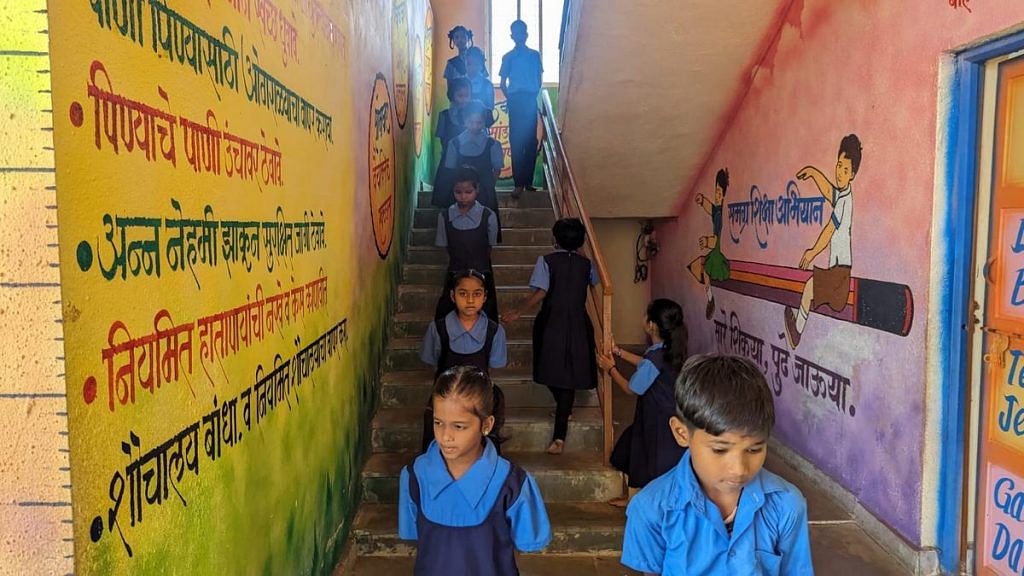
“In our village school, there would be fights and discrimination. I am not educated, and could not provide full education to my son because of caste discrimination. But now at this school, my grandchildren are happy and study regularly,” Waghmare said. “There is a bus facility as well so I am not worried.”
However, Khan acknowledges that some families remain hesitant.
“Parents are still worried and have not accepted this cluster school concept. But we are hopeful they will come after seeing the quality education that we are giving,” she said.
The Maharashtra government has been accused of merging schools to cut costs on teacher salaries and infrastructure upkeep, rather than for the welfare of students.
‘What’s the need?’
Around five months ago, a team from the Panshet school administration made a trip to Kuran village, about 4 km away. They convened a meeting at the local temple with the sarpanch and parents to discuss the advantages of shifting their children to the cluster school.
Even if we put our daughters in that cluster school, it is till class 7 only, What about after that?
-Pallavi Kadu, parent
But villagers said that none of them are sending their children to Panshet. Many don’t trust the new system. Even those who have enrolled their children in schools away from the village are reluctant to disrupt their rhythms and routines.
For instance, farmer Ganesh Kadu sends his son Sarthak, a class 3 student, to a zilla parishad school about half a kilometre away. He finds it convenient to get his son to school and return to his paddy field on time. He’s not convinced it’s practical to send Sarthak to Panshet.
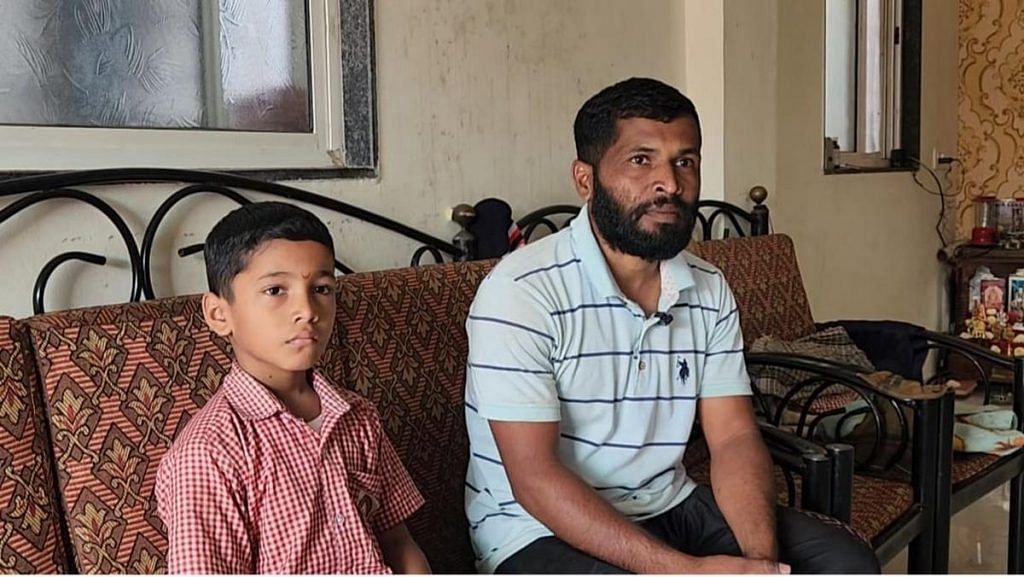
“Right now, they say there is a free bus facility, but what if they start asking us to pay a fee in the future? If we miss the bus, who will then drop him to school?” Kadu asked. “Even in our school, the teachers impart good education so what’s the need for this new school?”
Kadu and his wife, Pallavi, also have two daughters in class 6. The girls attend a middle school 3 km away. Their journey to school involves a 1.5-hour trek down a hill, across two rivers, and through dense vegetation inhabited by wild animals such as leopards.
But even in this situation, the couple would prefer existing infrastructure to be improved over switching schools.
“I get worried for my daughters. They come home by 6 pm every day. There should be a bus to go to the middle school. Even if we put our daughters in that cluster school, it is till class 7 only,” Pallavi said. “What about after that?”
The village schools in this area are still operational, but residents and teachers are worried they will close as the cluster school system takes hold.
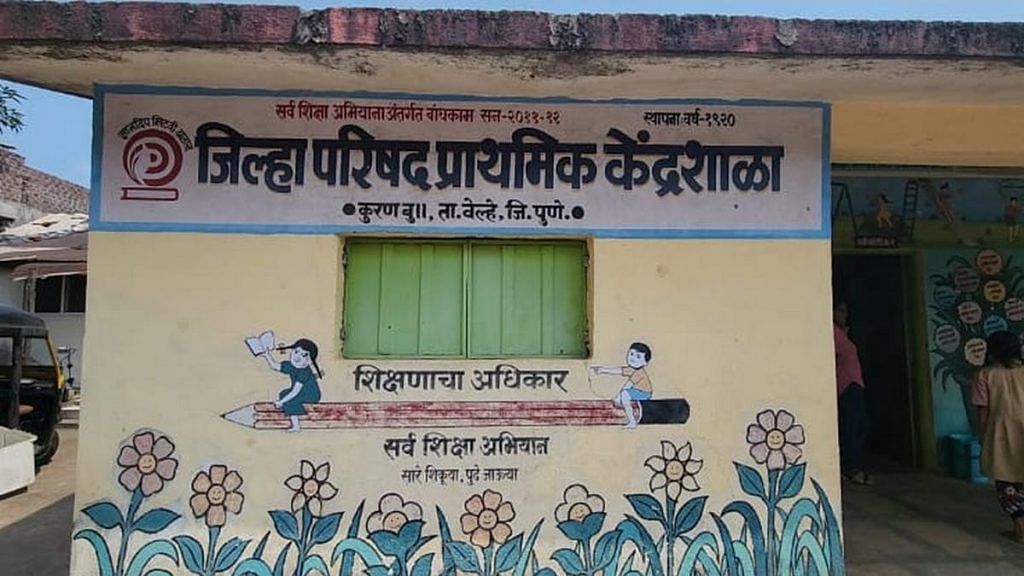
Ravindra Kumbhar, a teacher at Kuran primary school, said that parents should be given a choice.
“Our village receives a lot of rain and during the monsoon season, the bus might find it difficult to reach here. Besides, we are also working hard here to give a good education to children,” he said. “Why do they have to shut down these schools?”
‘More girls will drop out’
The Right to Education Act of 2009 specifies that a primary school should be located within 1 km of a village, a middle school within 3 km, and a high school within 5 km. In contrast, a cluster school can be as far as 15-20 km from a village.
In Maharashtra’s hilly and difficult terrains, where there are many tribal settlements, this distance is substantial.
Bhau Gawande, who has worked in underdeveloped regions like Chandrapur, Amravati, and Gadchiroli, noted that the roads in these areas are often too poor for school buses to reach village doorsteps. As a result, children may need to walk several kilometres to the bus stop, which might discourage them from attending school.
He also emphasised that young children feel more comfortable in their own villages, and that they should not be unnecessarily displaced.
“Small children anyway find excuses to not go to school. In hilly regions of Maharashtra, some areas are inaccessible by vehicles and hence it was necessary to have schools nearby,” he said.
Parents are still worried and have not accepted this cluster school concept. But we are hopeful they will come after seeing the quality education that we are giving
-Shabhana Khan, principal, Panshet cluster school
Vijay Kombey, president of the Maharashtra State Primary Education Committee, warned that if students were compelled to travel long distances, many would drop out, particularly girls. He claimed that these concerns were raised with government officials during meetings, but they were not taken seriously.
“The security of girls is crucial. Who will take care of their security if they are going to schools that are far off from their villages? Mostly farmers, Adivasis, and people from marginalised sections send their children to government schools. Among Adivasis, girls are anyway married young, but if they stop going to school, this social problem may worsen,” Kombey said.
According to him, it is the government’s responsibility to maintain these schools.
“It looks like the government is not thinking of education as a basic necessity. The concept of having schools in every hamlet, in line with earlier policies, is getting destroyed with these new cluster schools,” Kombey added.
Also Read: 100 words, 100 videos, 3 students. New Indian sign language breaks into STEM at CSIR-IMTech
Question of ratio
Small village schools tend to have a good teacher-student ratio by dint of their low enrollment—at one school in Maharashtra’s Washim district it was 1:1.
While the state government perceives this situation as detrimental due to the limited peer interactions available to students, others suggest that it allows children to receive more personalised attention from teachers.
Education expert Gawande pointed to Operation Blackboard, initiated during the Rajiv Gandhi government in 1987, which mandated a minimum of two teachers for primary schools so that students could get more personalised attention.
A school is not just a curriculum and a combination of teachers and students. It’s a huge canvas of competitions, sports, educational trips, friendships, new experiences.
-Suraj Mandhare, Maharashtra education commissioner
“Now they say that with these local schools with fewer students, the education quality suffered—but who is responsible for it? The number of students or the system?” he asked.
Instead, in his view, the quality of village schools can be upgraded to give children a well-rounded education. He was also not convinced by the argument that low enrollment amounted to poor education.
“Where is it written that social activities and personality development of students don’t take place in their village schools?” he said.
A new ‘canvas’
The Maharashtra government has been accused of merging schools to cut costs on teacher salaries and infrastructure upkeep, rather than for the welfare of students.
However, Mandhare denied this and said that the only goal was to give students better exposure and opportunities. He added that teachers would be accommodated elsewhere even if some schools were to close.
“The criticism is ill-informed. They are trying to counter reality with hypotheses— that is their resistance,” he said of detractors.
Cluster schools, Mandhare argued, would liberate many children from their “fragmented and limited” educational environment and open up a new world for them.
“A school is not just a curriculum and a combination of teachers and students,” Mandhare said. “It’s a huge canvas of competitions, sports, educational trips, friendships, new experiences. The scheme will bring all this to students who could not participate before.”
(Edited by Asavari Singh)


